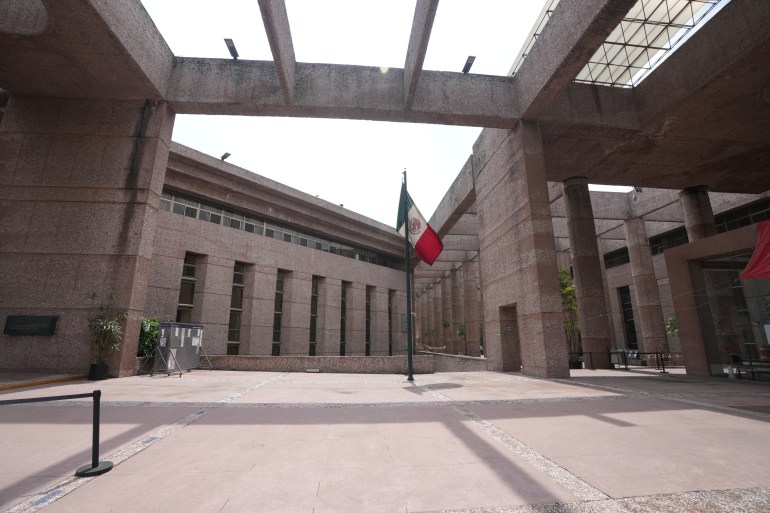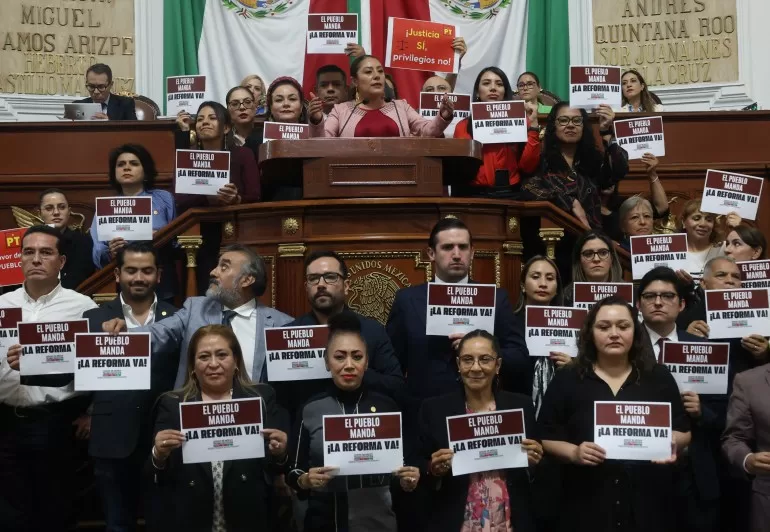Mexico’s President Andres Manuel Lopez Obrador is expected to enact controversial judicial reforms on Sunday, just ahead of Mexico’s Independence Day celebrations.
The reforms have sparked mixed reactions. Supporters argue they will make judges more accountable and praise the opportunity for the public to vote for those responsible for delivering justice. Critics contend this undermines the nation’s system of checks and balances by eroding the independence of the judiciary.
Here’s what we know as Mexico prepares to implement the reforms.
What is the main purpose of Mexico’s judicial reforms?
The law aims to transform the judiciary from an appointment-based system, primarily focused on their training and qualifications, to one where judges are elected by voters.
According to the government, the main goal of these reforms is to eliminate corruption from Mexico’s judiciary and ensure that it responds to the will of the people.
A bill to bring about the changes was approved by two-thirds of the upper house of parliament on Wednesday, following a contentious all-night debate. The reforms were approved by the lower house earlier this month.
All judges, both federal and state, from the lower rank to the Supreme Court, will be elected by citizens. There are nearly 7,000 positions in total.
The requirements to become a judge have also been reduced.
A law degree and five years of experience are sufficient for all judges except for those serving on the Supreme Court, where 10 years experience is required.
The reforms will also replace professional exams that are currently used to evaluate candidates. The new reform requires good grades and letters of recommendation.
The candidates must provide five letters from neighbours, colleagues or others vouching for their suitability for the role. The candidates are also required to submit an essay of three pages where they justify the reasons for their application.
The first election, covering about half of the judges, is expected to take place in June 2025. The rest should coincide with the regular elections of 2027. However, many details on how the voting will be organised are still unclear.
When these reforms take place, current judges – approximately 7,000 of them – will lose their positions but will then have the opportunity to run as candidates. However, many of the newly elected judges could step into specialised courtrooms they have never previously encountered, resulting in a potentially very challenging role.
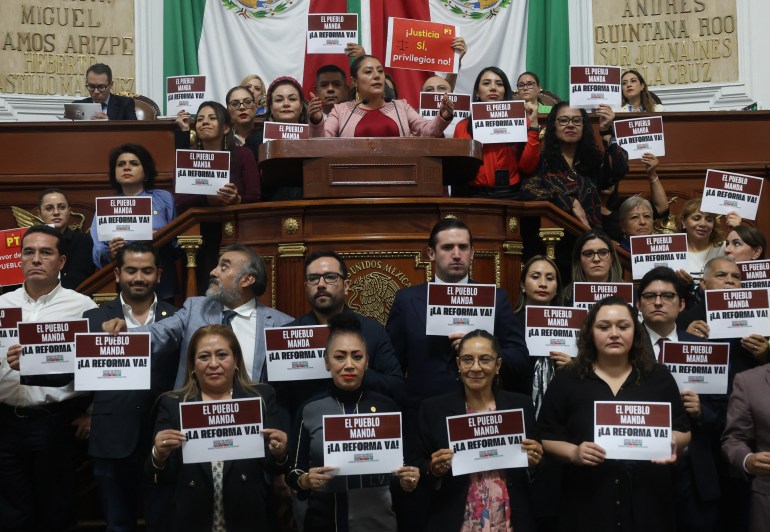
How are judges currently selected in Mexico?
Judges currently advance to positions in higher courts through periodic reviews.
For the Supreme Court, the upper house of parliament selects its members from a shortlist proposed by the president.
“It is a very important reform,” Lopez Obrador said on Thursday. “It reaffirms that in Mexico there is a true democracy, where the people elect their representatives … not the elites … not the oligarchy. Everyone, every citizen,” he added.
The Supreme Court is the final arbiter on whether laws and the authorities adhere to the Constitution.

Is there a problem with justice in the country?
Experts recognise that the current judicial system has problems with corruption. Surveys also suggest that Mexicans have little to no confidence in the judicial system.
However, experts also concur that the problems are more pronounced at the local level rather than at the federal.
“There were no known major corruption cases [at the federal level],” Arturo Ramos Sobarzo, the director of the Center for Investigation and Legal Informatics at Mexico City’s Escuela Libre de Derecho, told Al Jazeera. “Of course, there were problems, and they were addressed. The criticism was mostly at the local level. There, the salaries were not as good, and there was a more critical view of the judiciary.”
According to Mexico Evalua, a think tank that evaluates government policies, Mexico’s justice system suffered from a very high level of impunity in 2022. The index used allows for identifying the system’s ability to provide an effective response to the cases it handles. A high level of impunity means a low rate of both appropriate convictions and cases being brought to court.
The crimes with the highest level of impunity, according to the report, were intentional homicides, femicides, sexual abuse, disappearances and kidnappings.
In the case of intentional homicide, the national average of impunity was 95.7 percent.
But, according to research, it is not just a question of cases before courts not yielding justice – allegedly due to corrupt judges. In Mexico, more than 90 percent of crimes are never brought to court.
One of the main challenges has to do with prosecutors’ willingness and capacity to investigate.
Nepotism is another significant issue and, according to some experts, a major concern within the judicial system. A recent report revealed that 37 percent of judiciary officials have at least one family member employed in the judiciary.
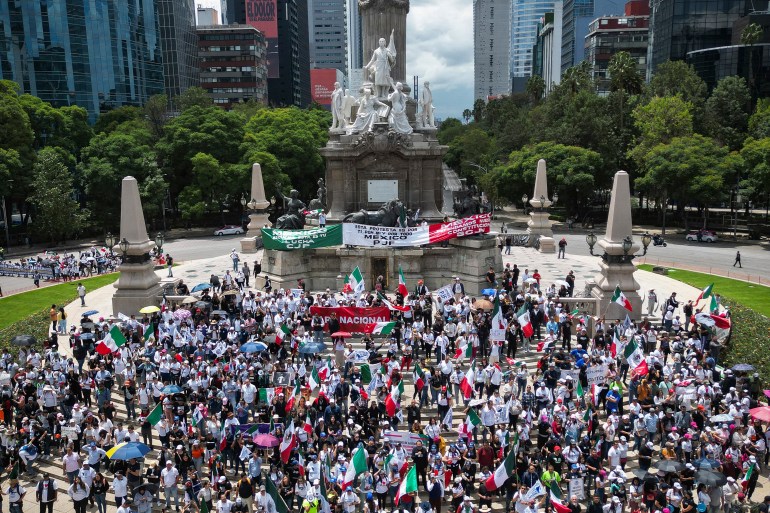
With these challenges, why are these reforms so controversial?
Experts say that the reform does not address the fundamental issues with the existing structure and prosecutors, who often lack adequate training and are frequently overwhelmed by their workload.
They also highlight that the new voting process for judges remains unclear and fraught with challenges.
Will voters take the time to research and review the resumes of the hundreds of relatively unknown candidates who could contest each position? Who will fund the candidates’ election campaigns? How many candidates will each ballot have on it? These are all unanswered questions.
“There’s sufficient people that consider that the judicial system doesn’t work well in Mexico,” Miguel Angel Toro Rios, the dean of the School of Social Sciences and Government at Tecnologico de Monterrey, a Monterrey-based university, told Al Jazeera.
He noted that the reforms do not address the main issues in the judicial system, prosecutors, the police or the National Guard.
Those problems can include corruption and, in many cases, chronic underfunding.
“If all of those things remain the same and the only thing you have is different judges… it’s not necessarily a given that they will be better equipped at dealing with these things. It seems like a lot of a hassle for a very limited policy gain,” Toros Rios explained.
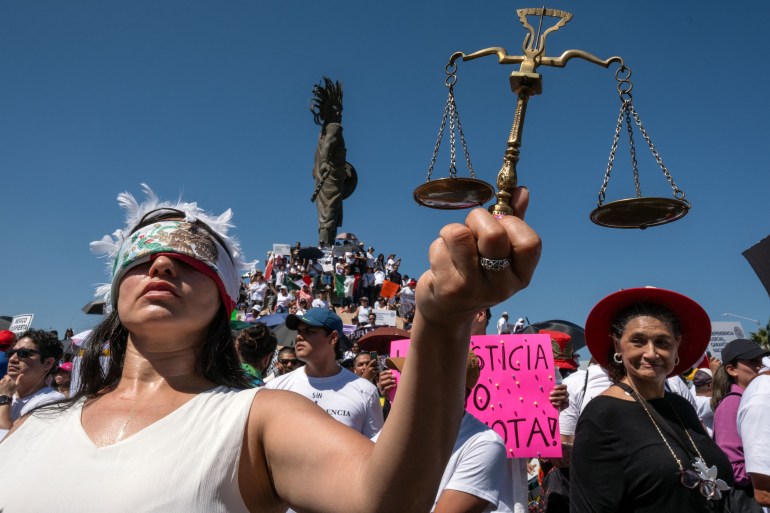
Experts also fear this new process could be tainted by corruption.
“Citizens primarily turn to local state courts for issues like femicides or civil and criminal matters,” Adriana Delgado, the director of Azteca Opinion at TV Azteca, a Mexican multimedia conglomerate, told Al Jazeera.
“However, nothing gets resolved, and this judiciary reform has been marred by political rather than technical debates.”
“The reform only changes how judges and magistrates are elected by popular vote, which raises concerns about the potential infiltration of organised crime or the influence of political and economic interest groups on the selection process,” Delgado added.
Could voting affect the work of the judges?
According to lawyer Ramos Sobarzo, these reforms place the judicial system in a very challenging position.
For the Supreme Court of Justice, elected judges would serve terms of eight, 11, and 14 years, depending on the voting results. Those with the most votes will remain in office for a longer period.
“We are very concerned because it will undermine judicial independence in many ways as it will leave some or much of it to popularity,” he added.
“What is going to happen … in the seventh and eighth years, they will start thinking about how to get re-elected.”
“At that point, they might decide not based on the incentives of analysing the case files but on gaining popularity from a particular case. They will decide how it will be received by public opinion,” he explained.
The governing party argues that allowing voters to choose would make judges more accountable to the public and make it easier to punish problematic ones.
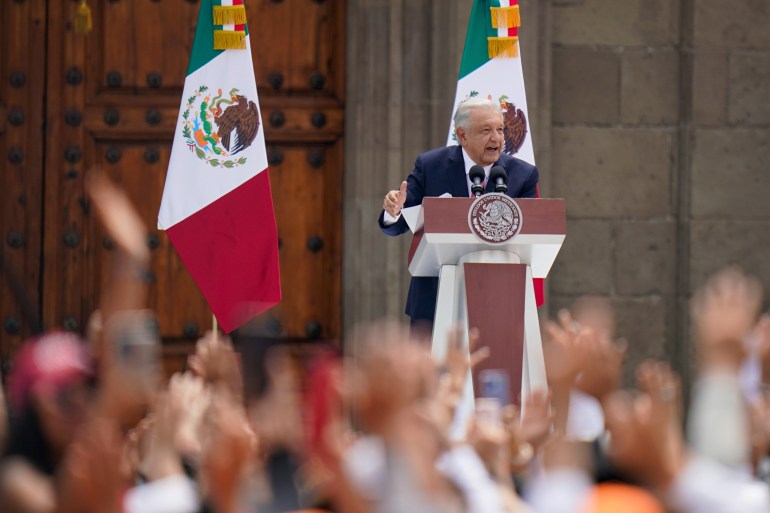
Besides the voting of the judges, what else are the reforms addressing?
The reforms will introduce “anonymous judges” to oversee organised crime cases, shielding their identities to protect them from reprisals, threats or pressure.
They will also reduce the size of the Supreme Court from 11 justices to nine.
They would also create a judicial disciplinary committee with the authority to address not only issues of judicial misconduct such as bribery, mishandling of evidence, or undue delays but also to investigate judges’ legal reasoning.
This aspect is also troubling to experts.
“We are very concerned about this change because it does not establish clear rules. It provides a very easy and free process for initiating proceedings against federal judges and magistrates, and we believe this will impact judicial independence. A judge might be ruling against a government appointment, and this court [the disciplinary committee] could intervene,” Sobarzo explained.
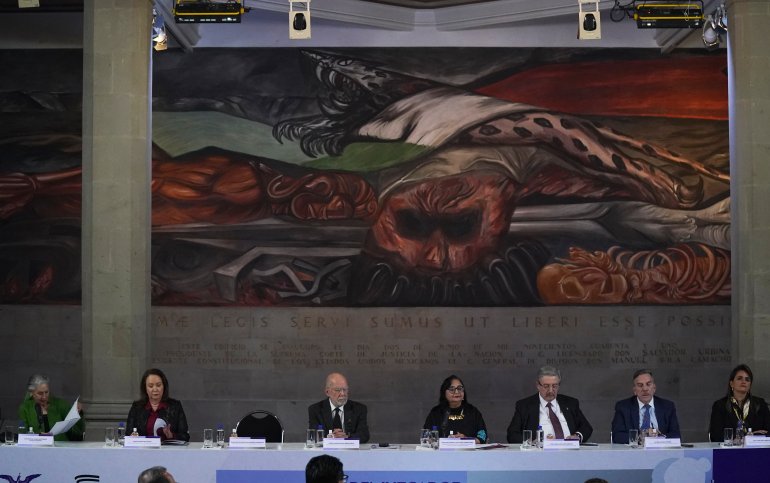
In the short term, what impact will this have on the judicial system in Mexico?
It is a big change in a short period of time.
In less than a year, on June 1, the election for half of the entire judiciary, including the complete Supreme Court, will take place.
Besides the challenge of organising such a big election, experts say that Mexicans might also feel an immediate impact on justice once this reform is in place.
“I do think they will feel the immediate impact, because this reform likely implies a salary reduction for members of the judiciary,” Sobarzo said.
The reform proposes that no minister, magistrate, or judge can earn a salary higher than that of the president.
According to reports, the typical salary for a member of the Supreme Court of Justice is above $10,000 a month. In 2018, Lopez Obrador said the president’s salary was about $5,613 monthly.
“We believe that, eventually, the best people will no longer be there,” Sobarzo explained.
But Toros Rios said that not much might change for everyday citizens and their legal disputes.
“It is not entirely obvious that everyday citizens will be affected,” Toros Rio said.
“Except if things benefit certain real powerful interest groups… they will probably be able to convince or fund the campaign of some of these judges, such that those judges will rule in favour of a lot of them,” he added.
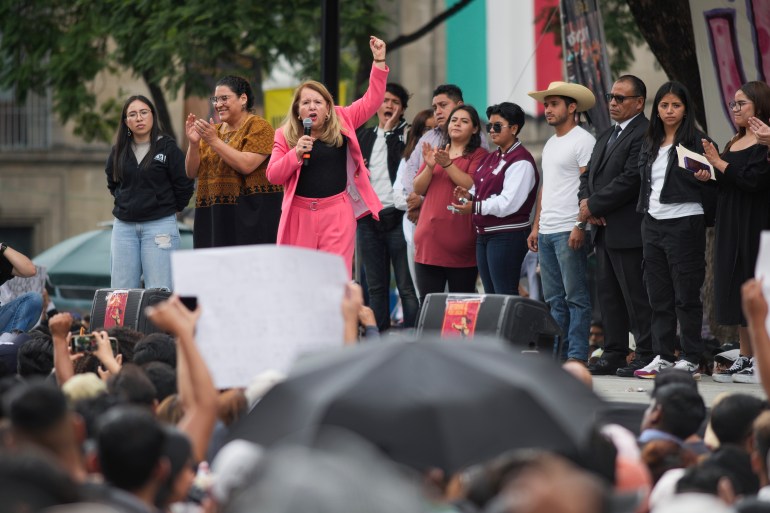
Are there other concerns?
Amid the debates and controversy over the judicial reforms, the markets have fluctuated and some analysts have warned that uncertainty over the country’s legal system could spook potential investors.
The United States, Mexico’s largest trading partner, has also expressed concerns over the reforms, calling them “a major risk” to Mexico’s democracy. Canada, Mexico’s second-largest trading partner, has also said that investors fear the reform could lead to instability.
However, other experts believe the reforms will not affect Mexico’s potential as an investment destination.
“We’ve seen businesses around the world operate in some of the worst countries in terms of human rights, government quality and authoritarian regimes. They don’t care, as long as there are profits to be made and they have certainty about the rules,” Toros Rios said.
“When there’s uncertainty about the rules, then is when investors stop investing. Once the new rules are set, and more or less investors have an idea of what they’re dealing with, things will be more or less the same [as] what they’ve been here right now,” he added.
